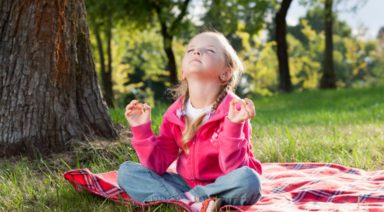Why Gratitude is the Secret to Getting Motivated

We all know how good it feels to be thanked for the things we do. Getting a thank you email from a friend is often enough to lift us up and energize us for the whole day. The irony in this magic formula is that it is actually the person doing the thanking that is getting the most out of this simple act. Being grateful changes how you feel about life.
Think of what you could do for yourself if you turned into a gratitude machine, pouring out your gratefulness 10 or 20 times a day. Now you might be thinking that sending out 20 thank you emails every day might be overkill. The thing is, it is not actually the physical sending of the thank you that generates the personal motivational jolt. This bump of energy comes from the self-reflective process and daily note taking about the people, activities, and situations for which you are grateful.
3 Simple Ways to Practice Gratitude
Even though “counting your blessings” on a daily basis may sound simple enough, the power of it can escape us. We fail to capitalize on this free source of self-motivation and revitalized enthusiasm for life. To stay connected to your gratitude with these three simple things:
1. Make it a ritual
Set up a time to be by yourself. It could be as little as five to 15 minutes. Just enough time for you to pause and reflect about anything and everything in your life that you are grateful for. Do this by reflecting on daily activities, and then write down at least 10 things for which you are grateful. It can be as easy as a bullet point list. It will amaze you when you look back over your wealth of goodness, especially when you are having a bad day.
2. Be open to the truly amazing simple goodness in your life
The key here is to be open to even the small things in your world that make it a better place. You will be surprised at what shows up in your life. Take for instance, the smiles you exchange with family members, the water you drink, or the beautiful stroll you took in the park. Once you give yourself permission to take inventory of the (literally) hundreds of miracles that greet you daily, your energy for life can’t help but blossom.
3. Spread the word
Once you have had a chance to open the door to the energy of gratitude you can amplify it by sharing the idea with others. You will acknowledge small acts of generosity that fill your life, like being grateful for your partner for taking out the garbage. When you start sharing your gratitude daily you’ll experience more acts of kindness that are being directed your way. When this happens the miracle starts to explode and you see the energy of gratitude coming back from all corners of your life.
The hardest thing about tapping into this quiet secret of self-motivation is just getting started. Once you start using this powerful, energizing tool, you can lift yourself from the doldrums to a place of endless enthusiasm for life and boundless joy every day.
How to Live with Purpose: The Eight Paths of Yoga

The word yoga is translated literally as union but there are so many different forms, types and practices in yoga that it can often seem confusing. Although the eight limbs of yoga and the eight paths of yoga sound similar, it’s important to differentiate them.
The eight limbs of yoga is explained in Patanjali’s Yoga Sutras as an eightfold path called ashtanga, which means eight limbs (ashta= eight, anga= limb). These limbs are suggestions for living a life full of purpose and meaning. They act as a compass for self-discipline, integrity, and connecting to the divine within ourselves as well as the world around us. They are: yamas, niyamas, asana, pranayama, pratyahara, dharana, dhyana and Samadhi.
The eight paths or forms of yoga are Hatha, Bhakti, Jnana, Karma, Tantra, Raja, Kriya, and Kundalini.
The eight paths or forms of yoga each incorporate at least one or more of the eight limbs of yoga. All forms are practices to accelerate the process of yoga, or what the Bhagavad Gita refers to as, “the science of creating union between the Individual Consciousness with the Ultimate Consciousness.”
Each yogic path essentially is a set of practices designed for a certain type of practitioner. While Karma yoga uses action and service, Bhakti yoga focuses on love and devotion as means of attaining union. Raja yoga is known as the yoga of concentration and Jnana yoga is the yoga of knowledge.
Different from the branches of yoga, explained in Ashtanga, the eight paths each have a unique history and origination. As a yoga practitioner, you might want to review the origin and meaning of each, try the exercises below and journal or meditate on the answers to determine which form you will choose to explore next. Remember, you can only master so many forms in a lifetime.




































